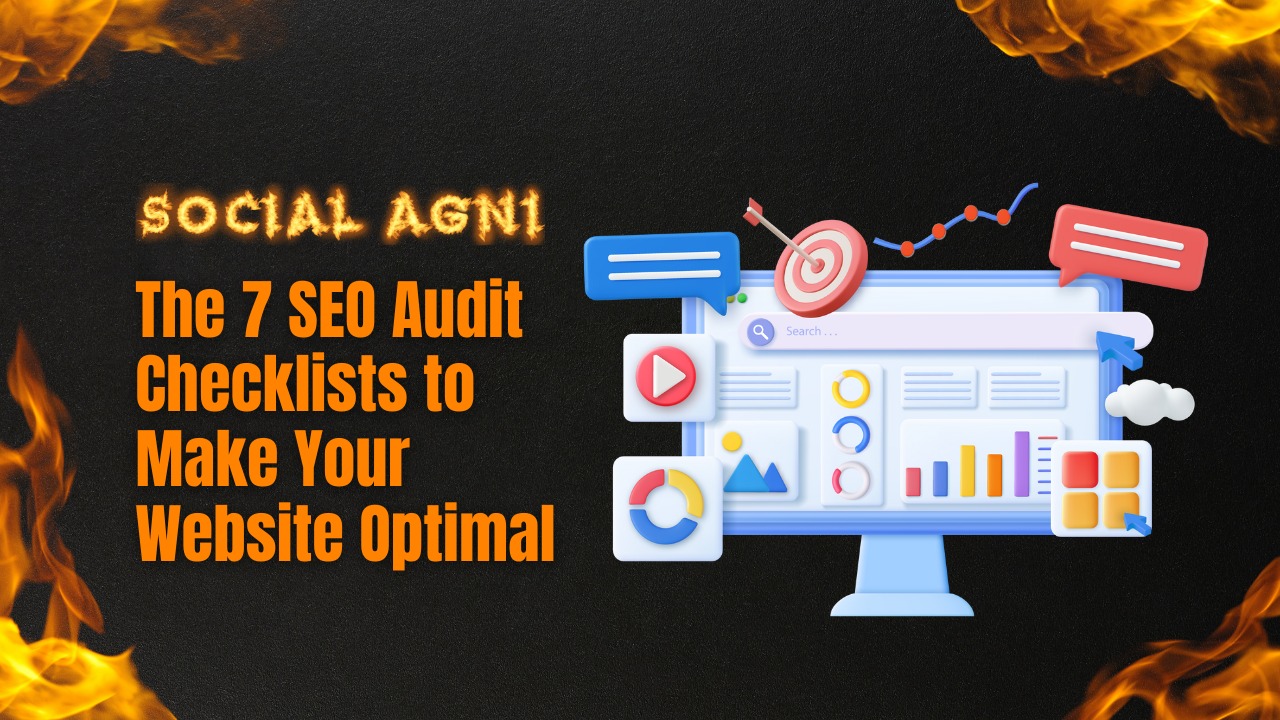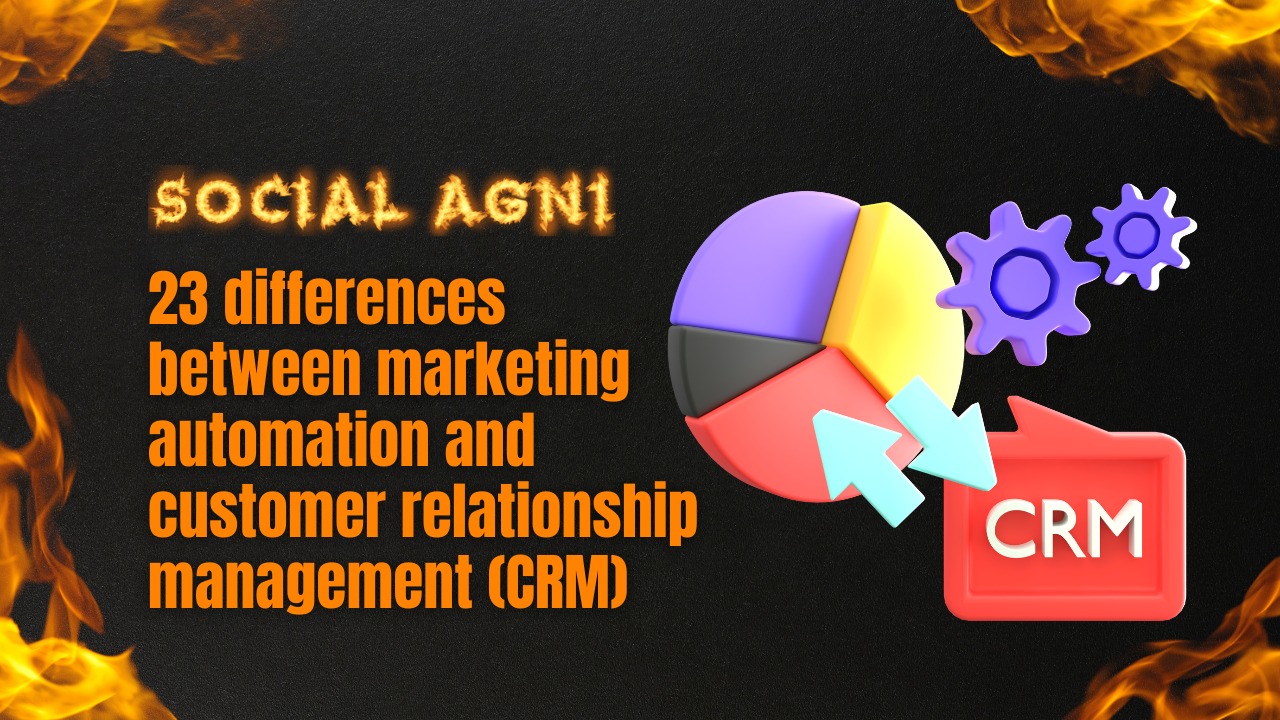Today, companies and people need well-optimized websites. Standing out online demands strategy. SEO helps here. SEO improves a website’s visibility and SERP ranks. SEO audits are routinely neglected. An SEO audit analyzes your website’s performance, structure, and content to find opportunities for improvement. It guides website optimization, search engine ranking, and organic traffic.
Why is SEO auditing crucial? Google updates its algorithms to provide people with the best results. Regular SEO audits are necessary to stay current and visible to your target audience. SEO audits reveal your website’s health and performance concerns. This procedure analyzes your website’s technical, on-page, content, and backlink profiles.
SEO audits improve website exposure and more. It also improves the user experience, identifies and fixes technical faults, optimizes your website’s structure and content, and increases the quality of visitors. An SEO audit also helps you outperform the competition. You can adjust to the ever-changing search landscape and stay competitive in search engine rankings by regularly reviewing and tweaking your website.
This post covers seven SEO audit checklists to optimize your website. We’ll analyze each checklist and offer SEO advice. If you’re a business owner, marketer, or website owner, optimize your website for search engines to boost your online visibility. Jump in!
Understanding the Importance of SEO Audit
Maintaining a competitive advantage in the realm of search engine optimization (SEO) requires staying on top of developments. An SEO audit is a methodical assessment of the SEO components on your website to determine their present condition and find areas for improvement. This is the reason why performing an SEO audit is crucial:
Discover Opportunities for Optimization: An SEO audit enables you to locate potential areas for optimizing your website. You may find possibilities to improve your website’s performance by examining numerous components, such as on-page SEO considerations, technical SEO elements, and content quality. This might entail increasing keyword targeting, site performance, broken links, or meta-tag optimization.
Boost Search Engine Rankings: To assess the value and relevancy of webpages, search engines utilize sophisticated algorithms. You may make sure your website complies with these algorithms’ standards by performing an SEO audit. Improved search engine rankings, better user discovery, and an increase in organic traffic can all result from optimizing your website in light of the audit’s results.
Improve User Experience: User experience (UX) is important for SEO. Search engine results favor websites that offer a smooth and user-friendly experience. You may assess your website’s navigation, page load speeds, and mobile compatibility with the use of an SEO audit. By improving these aspects, you may create a favorable user experience that may result in more conversions, longer visitations, and reduced bounce rates.
Maintain Your Competitive Edge: There is a lot of rivalry online. To gain an edge, your competitors are always improving their websites. You can remain on top of market trends, spot the tactics utilized by your rivals, and put improvements into place to match or outrank them by regularly doing SEO audits. An audit provides insights into areas where you can surpass them and helps you understand how your website compares to others in your niche.
Adapt to Algorithm Updates: To deliver more precise and pertinent search results, search engine algorithms are often updated. The exposure and rankings of your website may be greatly impacted by these adjustments. Regular SEO audits enable you to quickly adjust to algorithm changes. You can make sure your site is optimized and retains its ranks despite algorithm modifications by keeping an eye on its performance and making the appropriate improvements.
Keyword Research and Analysis
An SEO audit must include both keyword research and analysis as essential elements. Optimizing your website’s visibility in search engine results requires that you have a thorough understanding of the terms that your target audience uses to look for pertinent material. Here are some tips for conducting keyword research and analysis efficiently:
Finding Relevant Keywords: Begin by making a list of prospective keywords that relate to the content of your website. Take into account the goods or services you provide, terminology unique to your sector, and keywords that members of your target market are likely to use. Consider what your audience would enter into a search engine if you were speaking to them.
Use Keyword Research Tools: To improve and hone your list of keywords, make use of keyword research tools. Search volume, keyword competition, and related keyword information may be found using tools like Google Keyword Planner, SEMrush, or Moz’s Keyword Explorer. They may assist you in coming up with new keyword suggestions and helping you rank keywords according to their prospective importance.
Analyze Keyword Competition: Determine the degree of competition for each keyword by analyzing the keyword market. Ranking for highly competitive keywords can be difficult, especially if your website is in its infancy or lacks authority. To find keyword possibilities that you can realistically target and rank for, look for a mix between high search volume and moderate competition.
Long-Tail Keywords: Take into account including long-tail keywords in your plan. Although there are fewer searches for these lengthier, more precise keyword phrases, they frequently reflect stronger user intent and conversion potential. You may target a more specialized audience and attract relevant traffic that is more likely to convert by using long-tail keywords.
Analyze Keyword Relevance: Assess the appropriateness of the keywords for the material on your website. Make sure the keywords you use are relevant to the subjects, goods, or services you provide. Use keywords that appropriately describe the content of your website and the resources consumers may discover there. Relevance is essential for attracting targeted visitors to your website.
Optimize On-Page Elements: Once you have a list of relevant keywords, optimize the on-page aspects of your website accordingly. Use keywords intelligently throughout the text, including headers, meta descriptions, and page names. Make sure, nevertheless, that your keyword usage is natural and does not detract from the content’s quality or readability. Avoid cramming your content with keywords because it will hurt your website’s ranks.
Monitor and Refine: Continually monitor and improve your keyword research and analysis. Keep track of the success of your website, check keyword ranks, and study user behavior to find new keyword opportunities or modify your approach in response to shifts in user preferences or search patterns.
On-Page SEO Factors
On-page SEO factors are website features that may be optimized for search engine rankings. Optimizing these parameters tells search engines what your website is about and boosts keyword relevancy. SEO audits should focus on these on-page SEO factors:
Title Tags: Keywords in title tags optimize them. To get searchers to click on your website, make them 50-60 characters and interesting. Each page needs a proper title tag.
Meta Descriptions: Write engaging meta descriptions for each page. Meta descriptions affect click-through rates but not rankings. Use keywords and a call-to-action to get visitors to your site.
Header Tags: Use header tags to organize your information. Page headings and keywords should be in the H1 tag. Subheadings (H2, H3, etc.) help people and search engines skim information.
URL Structure: Use descriptive, keyword-rich URLs. Clean URLs enhance user experience and help search engines understand the page content. Hyphenate words and avoid digits and unnecessary characters.
Keyword Optimization: Use keywords organically in headers, paragraphs, and picture alt tags. Overusing keywords might hurt your rankings. Create high-quality, useful material for your audience.
Internal linking: Link relevant internet pages using internal links in your content. Internal linking enhances website navigation, spreads link equity, and helps search engines understand website structure and hierarchy. Use contextual anchor text.
User Experience (UX): Optimize your website’s UX to engage visitors and promote exploration. Ensure quick page load times, responsive mobile design, straightforward navigation, and readable font sizes. Positive user experiences may boost search engine rankings, visit durations, and bounce rates.
Picture Optimization: Reduce picture file size without losing quality. Compress photos, add keyword-rich alt text, and label them descriptively. Image optimization speeds up page loading and helps search engines index visual material.
Content Formatting: Headings, subheadings, bullet points, and short paragraphs make the text easier to read. To increase readership, use graphics and videos. Well-formatted information makes visitors stay longer.
Schema Markup: Structured data in schema markup helps search engines rank your website higher. Schema markup helps search engines interpret and display rich snippets like star ratings, product information, and event details.
Technical SEO Analysis
Technical SEO study ensures your website is accessible, crawlable, and search engine optimized. Fixing technical issues boosts website exposure, rankings, and user experience. Here are technical SEO analysis priorities:
- User experience and search engine rankings depend on website speed. Google PageSpeed Insights or GTmetrix may analyze your website’s load times. Optimize pictures, enable browser cache, minify CSS and JavaScript, and use a CDN to speed up your site.
- Most internet users use mobile devices, thus your website must be mobile-friendly. Google’s Mobile-Friendly Test may assess your site’s mobile performance. For a smooth mobile experience, use responsive design, viewport setting, and touch optimization.
- Check search engine indexing. To check if search engines are indexing your critical pages, use site:yourwebsite.com. Check for indexation concerns like robots.txt or meta tags. XML sitemaps assist search engines find and index your sites.
- Make sure search engine crawlers can explore your website. Google Search Console may detect crawl issues, broken links, and excessive redirects. Optimize your website’s structure and internal links to make all pages searchable.
- Assess readability and relevancy. Use keyword-rich URLs to appropriately describe your pages. Optimize dynamic URLs for search engines and consumers and avoid superfluous parameters. Canonical tags prevent duplicating material.
- Use HTTPS and an SSL certificate to safeguard your website. Search engines and visitors trust secure websites. To prevent attacks, check for security vulnerabilities and update your website’s software, plugins, and themes.
- Search engines accept XML sitemaps. Sitemaps help search engines index all your relevant pages. Add or delete pages from your sitemap.
- Implement schema.org structured data markup. Structured data helps search engines display rich snippets. This boosts website exposure and click-through rates.
- Check for broken links, obsolete redirects, and 404 error pages. Fix broken links or redirects to improve user experience. Make your 404 error page informative and propose other pages.
- Track your website’s performance with Google Analytics: track goals, analytics, and user behavior. Use data to enhance and make decisions.
Content Evaluation
Content boosts SEO and engages and informs your readers. SEO audits need content evaluation and optimization. Key content assessment steps:
Content Relevance: Evaluate your content’s industry and audience relevance. Make sure every material meets your website’s aims and audience’s demands. Remove or update obsolete or unimportant stuff.
Keyword Integration: Check your keyword integration. Avoid forcing them. Keyword-optimize title tags, headers, and body text. Prioritize readability and user experience over keyword density.
Content Quality: Is it well-written and exciting? Does your audience benefit? Create fresh, high-quality content to separate from the competition. To avoid grammatical mistakes, proofread and edit.
Content-Length and Depth: Longer content may rank higher in search engines. Provide detailed information and address user inquiries. Keep your material focused, structured, and simple.
Multimedia: Include photos, videos, infographics, and audio in your material. Visuals and interactivity improve user experience, engagement, and shareability. Optimize multimedia assets for speed and provide informative alt tags for SEO and accessibility.
User Engagement: Use bounce rate, time on the page, and social shares to assess your content’s appeal. High-quality, engaging content reduces bounce rates and increases session length. Use this data to enhance or promote content.
Internal and External Linking: Look for ways to link internally and externally. Internal links assist people in navigating your website and distribute link equity, while external links give resources and references. Links should be relevant, contextual, and beneficial to readers.
Call-to-Action (CTA): Assess your content’s CTAs. A well-placed CTA encourages consumers to subscribe, download, or buy. To boost conversions, write persuasively and optimize CTAs.
Readability and Formatting: Use the Flesch-Kincaid Readability Test to evaluate your text. Avoid jargon and write for your audience’s reading level. Headings, subheadings, bullet points, and paragraphs increase readability and scannability.
Freshness and Updates: Review and update your material often to keep it current. Outdated content might lower your website’s rankings. For time-sensitive topics, include timestamps or update alerts to show content freshness.
Backlink Profile Audit
Backlink profile audits assess your website’s backlink quality and quantity. Backlinks are a key SEO ranking component, thus assessing your backlink profile helps discover difficulties and possibilities. Backlink profile audit steps:
Backlink Acquisition Strategy: Maintain search engine criteria and focus on high-quality, relevant backlinks from reputable domains. Assess your backlink diversity and adapt your strategy as needed.
Backlink Quality Evaluation: Find industry-authoritative backlinks. Consider domain authority, page authority, relevancy, and website repute. Low-quality or spammy backlinks might hurt your website’s rankings.
Anchor Text Analysis: Make sure branded and non-branded anchor text is evenly distributed. Search engines may view keyword-stuffed anchor text as manipulative. Build natural links.
Link Diversity: Use editorial, directory, guest post, social media, and industry-specific backlinks. A diversified link profile shows that many sources appreciate and reference your website.
Toxic or Spammy Backlinks: Disavow any harmful backlinks. Google Search Console, Moz’s Link Explorer, and SEMrush’s Backlink Audit can uncover dangerous backlinks. Submit a disavow file to Google’s Disavow Links Tool to tell search engines to disregard such links.
Competitor Analysis: Find their high-quality backlinks and sources. This study might reveal fresh link-building opportunities and reveal your industry’s competitive environment.
Broken and Lost Backlinks: Check for damaged or missing backlinks to your website. 404 errors or inactive pages cause broken backlinks. Fix broken backlinks with Ahrefs, Majestic, or SEMrush. Ask webmasters to update or restore lost backlinks.
Social Media Backlinks: Assess social media backlinks. Check Facebook, Twitter, LinkedIn, and Instagram mentions, shares, and connections. Social signals affect SEO indirectly.
Link-Building Opportunities: Find industry-related link-building opportunities. Find related websites, blogs, and influencers to connect to your work. Personalize outreach initiatives or guest posting possibilities. For natural, high-quality backlinks, provide value and create connections.
Link Monitoring and Maintenance: Monitor your backlink profile for new links, lost links, and changes in backlink quality. Backlink monitoring tools notify you of your profile’s health. SEO requires continual backlink optimization and maintenance.
Tracking and Measurement
SEO audits need monitoring. Monitor key indicators and analyze data to evaluate SEO performance and make data-driven improvements. Tracking SEO results:
Set Up Analytics Tools: Track your website’s performance with Google Analytics or other technologies. Goals, conversion tracking, and website integration. Check data viewing and analysis permissions.
Define Key Performance Indicators (KPIs): Define KPIs that support corporate goals. SEO traffic, keyword rankings, bounce rate, average session length, conversion rate, etc. Set statistics targets to assess SEO.
Track Organic Search Traffic: Track organic search traffic to your website. Organic traffic, sources, and top landing pages. Trend organic search performance.
Keyword Rankings: Follow your keywords’ SERP rankings. Keyword tracking tools and search engine rank monitors track keywords. Rank and optimize SEO.
Backlink Profile: Track backlink quality and development. Domains, backlinks, and site authority. Identify new and toxic or spammy backlinks. Compete with backlink growth.
Engagement metrics: Bounce rate, time on page, pages per session, and conversion rates. Improve website visitors’ engagement. Optimize high-bounce or low-time-on-page pages for user experience.
Conversion Tracking: Track conversions to evaluate SEO. Attribute sales, form submissions, email sign-ups, and downloads to SEO campaigns or landing pages. Optimize conversions.
Site Performance: Page load, server response, and mobile responsiveness. Use Google PageSpeed Insights or GTmetrix to improve user experience and search engine rankings.
Traffic Sources: Check organic search, direct, referral, and social media traffic. Optimize high-value traffic. SEO vs. other marketing techniques.
Reporting and Analysis: Assess SEO results periodically. Metrics, trends, and actionable insights. Show clients and teammates these stats to demonstrate SEO’s value. Data-driven strategy and decision-making.
Conclusion
In conclusion, an SEO audit is essential for optimizing and ranking your website. This article’s seven checks will guarantee that your website is optimized and SEO-friendly. An SEO audit is essential to a thorough website examination. Keyword research and analysis help you choose and strategically use keywords in your content. On-page SEO optimizes your website’s pages for search engines and users. Technical SEO improves website accessibility, crawlability, and performance.
Engaging visitors and improving SEO need content evaluation and optimization. Ensure a healthy link profile with a backlink profile audit. Finally, tracking and measurement let you track important parameters and make data-driven decisions to enhance SEO performance over time. These checklists and frequent SEO audits will help you optimize your website, enhance exposure, attract organic traffic, and improve user experience. Keep up with SEO developments and search engine algorithm updates to be competitive online.
Frequently Asked Questions (FAQs)
1. Why is an SEO audit important?
An SEO audit evaluates your website’s SEO performance. It helps you optimize your website for organic traffic and discover issues that may be hurting your search engine results.
2. How often should I audit SEO?
An SEO audit should be done once a year or after big website modifications like redesigns or content revisions. Website optimization and SEO best practices are maintained with regular audits.
3. How do I do website keyword research and analysis?
Keyword research finds keywords and phrases your target audience uses to find your products and services. Find high-volume, low-competition keywords utilizing Google Keyword Planner, SEMrush, or Ahrefs. Consider keyword relevancy, purpose, and user behavior.
4. What on-page SEO aspects should I audit?
Optimize title tags, meta descriptions, headers, and URL structure for on-page SEO. Use keywords naturally and strategically. Image optimization, internal linking, and mobile-friendliness increase user experience.
5. What is technical SEO analysis?
Technical SEO study evaluates site performance, mobile responsiveness, crawl ability, XML sitemap, and robots.txt. Broken links, duplicate content, and canonicalization are also checked. Technical SEO helps search engines crawl and index your website.
6. How can an SEO audit assess my website's content quality?
Relevance, readability, distinctiveness, and engagement determine content quality. Make sure your content meets your target audience’s demands and is well-written, useful, and engaging. Bounce rate, duration on the page, and social shares indicate content performance.
7. How should I evaluate my website's backlink profile?
Look for authoritative industry backlinks while reviewing your backlink profile. Check your anchor text and backlink variety. Disavow poisonous or spammy backlinks that may hurt your website’s rankings.




















